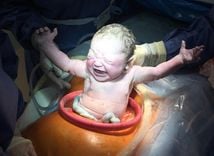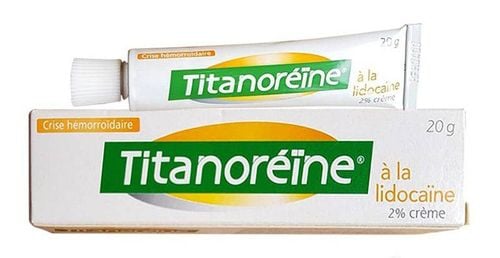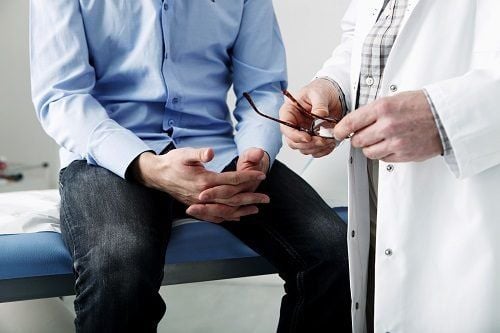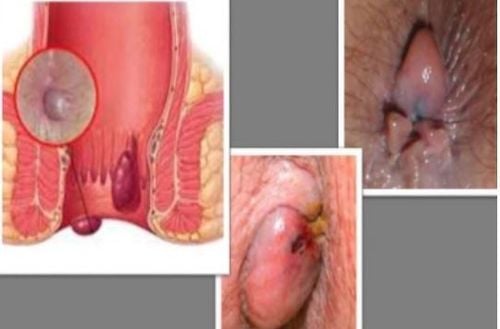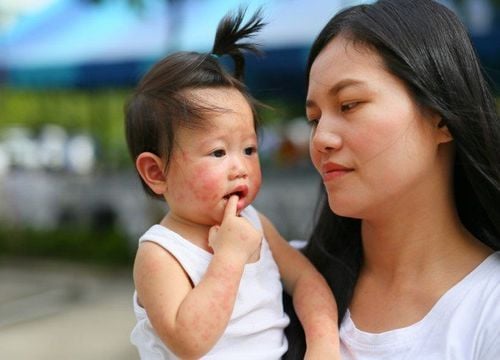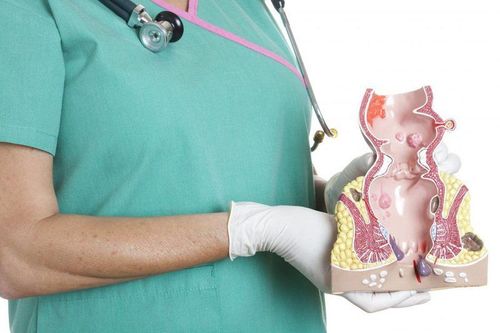Consulted by: Master, Doctor Đoàn Ngọc Quỳnh Trâm - Pediatrician - Neonatologist, Vinmec Nha Trang International General Hospital
Many people mistakenly believe that children cannot develop hemorrhoids. In reality, many children suffer from hemorrhoids due to improper care and an unbalanced diet. The following article will share some knowledge that parents need to know about hemorrhoids in children to prevent them in time.
1. Hemorrhoids in Children
Hemorrhoids occur due to increased pressure on the walls of the anal veins, leading to excessive swelling of the veins, causing them to enlarge into hemorrhoidal masses. Accompanying symptoms include anal pain and bleeding. Hemorrhoids in children occur due to repeated habits that increase anal pressure. The disease is divided into two main types:
- External Hemorrhoids: External hemorrhoids appear outside the anal vein wall, and the hemorrhoidal mass can be seen or felt.
- Internal Hemorrhoids: Form inside the anal canal and are difficult to detect early by observation. Initial symptoms include bleeding hemorrhoids and anal pain. Usually, when hemorrhoids are in the advanced stage, the hemorrhoidal mass protrudes outside and can be observed.
- Mixed Hemorrhoids: Appear simultaneously as both external and internal hemorrhoids, causing quite severe symptoms.
2. Images of Hemorrhoids in Children
2.1. Internal Hemorrhoids
Internal hemorrhoids appear and develop very quietly inside the anus, making it difficult to detect the disease.
The condition is often detected when blood appears on toilet paper or in the stool following defecation. The amount of blood varies depending on the stage of the disease; in severe stages, the blood may form clots, drip, or stream.
- Stage 1 Internal Hemorrhoids: In the early stage, the signs of internal hemorrhoids are quite subtle. The child will have symptoms of bleeding during defecation, but in the early stage, the amount of blood is too little to be easily detected.
- Stage 2 Internal Hemorrhoids: As the internal hemorrhoidal mass increases in size, the bleeding during defecation becomes more apparent, and the hemorrhoidal mass begins to protrude after each defecation but can still retract on its own. Additionally, the child may experience symptoms such as pain, itching, and anal swelling.
- Stage 3 Internal Hemorrhoids: The hemorrhoidal mass protrudes outside the anus during defecation. Initially, the hemorrhoidal mass retracts spontaneously, but over time, it may require manual assistance to reposition.
- Stage 4 Internal Hemorrhoids: The hemorrhoidal mass completely protrudes outside the anus and cannot be pushed back even with fingers.
2.2. External Hemorrhoids
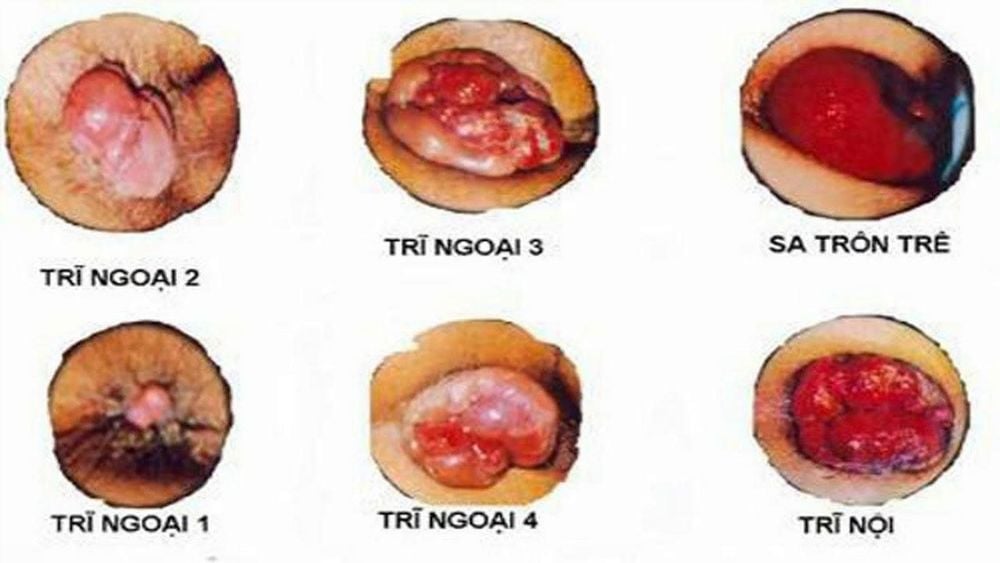
External hemorrhoids involve bleeding during defecation, protruding hemorrhoidal masses, and sensations of pain, itching, and burning. Depending on the stage, the disease has different recognizable signs. Specifically, symptoms are divided into four stages:
- Stage 1 External Hemorrhoids: The hemorrhoidal masses protrude outside the anal margin, and the child will feel a slight bump in the anus. If detected at this stage, treatment is very simple.
- Stage 2 External Hemorrhoids: The veins develop into twisted hemorrhoidal masses outside the anus.
- Stage 3 External Hemorrhoids: At this stage, the hemorrhoidal masses have grown large, blocking the anus. During defecation, the hemorrhoidal masses are rubbed, causing bleeding and pain for the child.
- Stage 4 External Hemorrhoids: The hemorrhoidal mass becomes infected, causing pain and itching for the child.
2.3. Mixed Hemorrhoids
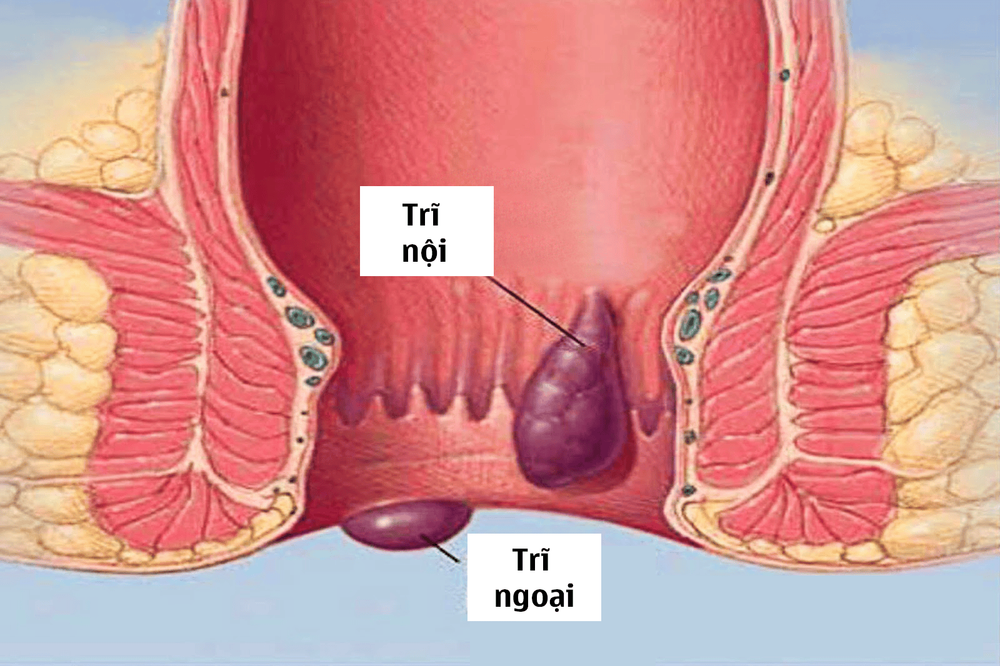
Mixed hemorrhoids only form when both types of hemorrhoids occur simultaneously, and when internal hemorrhoids protrude and do not retract, allowing the hemorrhoidal masses to connect. Therefore, mixed hemorrhoids are very dangerous and need quick treatment to prevent severe complications for the child.
3. Causes of Hemorrhoids in Children
3.1. Prolonged Constipation in Children
Due to insufficient fiber intake, children are more prone to hemorrhoids. Typically, children do not like to eat vegetables and fruits, and parents do not pay enough attention to this, leading to meals lacking fiber, making children more prone to constipation and subsequently hemorrhoids.
3.2. Sitting on the Pot for Too Long
Allowing your child to sit on the pot for too long during defecation inadvertently increases pressure on the anal area, compressing the anal veins and forming hemorrhoidal masses. Therefore, you should monitor the time your child spends defecating!
3.3. Physiological Anatomy of Children (Child's Condition)
As children are in the process of developing and completing their body parts, the anal muscles in children are still quite weak, and the connective tissues are loose. The ligaments in the anus and rectum are not yet firmly connected. Additionally, the sacrum and rectum of children are aligned, making the rectum easily pushed upward, increasing the risk of hemorrhoids.
4. Symptoms of Hemorrhoids in Infants
- Difficulty Defecating: This is a typical sign that any child with hemorrhoids will experience. You should pay attention if your child sits for too long during defecation or shows signs of discomfort or crying during bowel movements. These are signs that the child is experiencing digestive issues, particularly constipation or hemorrhoids.
- Blood in Stool: When suffering from hemorrhoids, the child must strain to push the stool out, inadvertently causing pressure on the anus. The stool may come out with blood, or some children may have blood in the anal area even without defecating. This sign is more noticeable when you use toilet paper for the child, as blood will stain the paper.
- Protruding Hemorrhoidal Mass in the Anus: This is the most noticeable symptom in all hemorrhoid patients, whether children or adults. Initially, the hemorrhoidal mass is small and can retract on its own when it protrudes. Over time, as the hemorrhoidal mass enlarges, it cannot retract on its own, causing pain and discomfort for the child and requiring timely treatment.
5. Caring for Children with Hemorrhoid Symptoms
When a child has hemorrhoids, you need to keep the anal area clean. Use warm water to wash the anus after each defecation and before the child goes to sleep to support the treatment process. Alternatively, use herbal steam from perilla leaves to steam the outside of the anus, helping to improve blood circulation.
Additionally, when the child is constipated, parents should gently massage the abdomen to help with bowel movements. Simply have the child lie on their back, then use the palm of your right hand to gently press on the child's abdomen. Start moving the palm on the abdomen from right to left gently, then switch from bottom to top without pressing hard. Each session lasts about 15 minutes, 2-3 times a day, until the child can defecate.
6. Preventing Hemorrhoids in Children
- Ensure sufficient daily fiber intake for the child by adding more vegetables and fruits to their daily meals and having them drink plenty of water each day.
- Alleviate constipation in children by incorporating a small amount of honey into their daily diet. Honey has a very good laxative effect, thereby reducing the risk of constipation in children.
- Keep the anal area clean: Children often do not clean the anal area thoroughly after defecation, leading to bacteria accumulation in the anus when there are scratches, causing infections. You can clean the area for your child or teach them proper hygiene to prevent infections.
- Establish a regular bowel movement schedule: Having a fixed time for bowel movements each day helps the child's bowel movements function better, making defecation easier and preventing hemorrhoids more effectively.
When a child shows signs of hemorrhoids, parents should take them to reputable medical facilities for appropriate treatment plans. Vinmec International General Hospital currently applies the Longo hemorrhoid surgery method to treat grade 2, grade 3, grade 4 hemorrhoids, and circumferential hemorrhoids, with many advantages over traditional surgery:
- Less pain compared to traditional hemorrhoidectomy
- No open wounds in the anus, making postoperative care easier
- Shorter hospital stay (average 2 days) and ensures aesthetics
Vinmec employs the advanced PPHO3 hemorrhoid stapler from Johnson & Johnson (USA), offering effective hemostasis and secure sutures. Its large-volume chamber facilitates thorough mucosal resection for internal hemorrhoids, minimizing pain and accelerating recovery in children.
To arrange an appointment, please call HOTLINE or make your reservation directly HERE. You may also download the MyVinmec app to schedule appointments faster and manage your reservations more conveniently.






